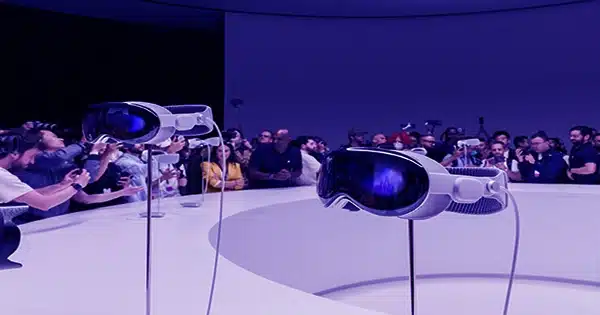Apple Vision Pro, a mixed reality headset, will be available in stores next week, promising consumers a personal movie theater wherever they go and screen navigation with the tap of a finger.
However, the buzzy product comes at a price that will undoubtedly deflate some clients. The most basic model is $3,499, while a more powerful version costs nearly $4,000.
Analysts believe the high price is due to production costs for the Vision Pro, as well as an initial focus on reaching experts such as developers who may improve the product with additional programs.
“It’s a very early product,” Ben Bajarin, an analyst with Creative Strategies, told ABC News. “There’s a scale and manufacturing challenge that Apple is up against.”
Apple did not immediately react to ABC News’s request for comment.

Here’s all you need to know about why the Vision Pro costs $3,499 and if customers will pay it:
Why is the Vision Pro priced at $3,499?
Analysts believe the price reflects Vision Pro’s pricey development and production, which required the business to build components specifically for the headset.
According to Apple, laminated glass serves as a platform for the device’s cameras and sensors, and a flexible Light Seal helps shape the product to a user’s face. According to Apple, a new R1 chip enables the computer to analyze inputs from a person’s eye and hand motions.
“If anything, the price is on the low side given the technology that’s packed into this,” Avi Greengart, chief analyst at research firm Techsponential, told ABC.
In an interview with ABC’s “Good Morning America” in July, Apple CEO Tim Cook stated that Vision Pro’s pricing is due to the high costs of manufacturing what he deems a technological breakthrough.
“The engineering and depth of engineering in it is mind-blowing,” he remarked. “Does it come free?” It costs money to do so. But I think it’s an excellent value.”
Analysts stated that because Apple has yet to establish full-scale manufacturing for the product, the company will face challenges in producing the vast quantity of headsets required to satisfy a mass market at a cheaper price.
Furthermore, they stated that initial adoption among developers and other professionals who are prepared to pay a premium for the Vision Pro will improve its offerings as it reaches a larger audience.
“Apple has been pretty clear in positioning this product as a blank canvas for developers to create and make something brand new,” said Bajarin.
The price also fits Apple’s normal role as a creator of items that are more expensive than competitors’ products but attempt to compensate with a better user experience, according to Angelo Zino, senior industry analyst at CFRA Research, who previously noted a similar dynamic with its smartphone.
“Apple is being who it is,” Zino explained.
Will customers pay the exorbitant cost of a Vision Pro?
The initial response to the Vision Pro reveals that some customers are ready to pay the hefty price.
The product will not be available in stores until next week, but pre-orders sold out nearly instantly when they opened on January 19, according to Ming-Chi Kuo, an analyst at TF International Securities, who wrote about it on Medium on Monday. Within hours, shipping delays had increased to as much as seven weeks, he noted.
Overall, Kuo discovered that the company sold up to 180,000 headsets over the first weekend of preorders.
However, Kuo said that consumer appetite appeared to wane fast. delivery timings were stabilized within 48 hours, in contrast to the extended delivery delays that generally accompany iPhone model debuts, Kuo stated.
“The inability to sustain a steady increase in pre-order demand is a major concern,” he added.
Analysts who talked with ABC News predict the business to sell approximately 500,000 headsets this year. In comparison, Apple sold over 232 million iPhones in 2022, the most recent year for which statistics were available.
“They’ll sell every Vision Pro they can make,” Bajarin added, citing production issues as the key barrier to increased sales.
















